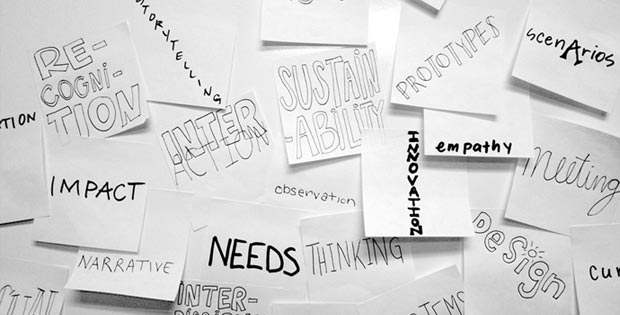After nearly 2 weeks of receiving a flood of emails and queries from fellow professionals and students who read my interview published in The AppJuice, I have decided to address all the queries in this article and elaborate a bit more on the applicative side of design thinking.
I view design thinking as a philosophy and a mindset. Anything that we encounter, that is not nature, was crafted around some concept of design; your office, the place you are seated, the device through which you are reading this article, your business or the company you work for, even your personality to some extent. Everything is designed either through conscious or subconscious decisions.
Perhaps design is best learned through examples so let’s examine some case studies on the benefits of design thinking and how designers help shape lives of people around the world.
Stanford Case Study: Rethinking Child Mortality
According to the World Health Organization, close to 100 million babies die each year, with 4% of them dying in the first month post-birth. In 2011, a team at Stanford was challenged to create a less expensive incubator, which is normally a USD 20k investment. The team were tasked to design an incubator that would cost no more than USD 300, with the idea that if there are more incubators available at a lower cost, they would be better able to help the 4 million children (majority of which are in developing nations) to survive past the one month mark. The team went to India and visited the hospitals to understand the context of the challenge in how the incubators were being utilized in the hospital environment.
What they found that even though an incubator costs USD 20k or more, they were readily available at most of the hospitals surveyed. They also found that while the incubators were there, the babies were unable to reach the hospitals on time in order to be placed into the incubators. The team then went to the villages to understand the delay and found that due to the fragile nature of the new born babies, they were unable to withstand the transportation strain of their journey.
The problem was re-framed as: “more incubators will not lead to expanded life – a smarter baby transportation solution will.” Armed with this insight, the team embarked on an ideation, testing and prototyping journey that resulted in the creation of a sleeping bag that would keep the baby warm and shock free.

They then went back into these villages and gained feedback from the mothers on how they held the bag, what were the fears and taboos around such a change, what were the concerns of the mothers, what mode of transport would be used from the village to the town hospital and so on. They poured the feedback into the product for a finalized Eskimo styled sleeping bag. While the solution looks simple, incubators have been around for over a century and have been a standard for treating prenatal babies. This innovation via design thinking changed the paradigm of the technology usage and the behaviors of interaction.

While, the WHO sleeping bag is a very good example of design thinking. There is a lot more to the designer’s profession than just field research and analytical decision making.
So, what exactly is design thinking?
Einstein is often attributed for the following quote:
If I had only one hour to save the world, I would spend fifty-five minutes defining the problem, and only five minutes finding the solution.
On that note, let’s look at a couple of problems ourselves.
1) What’s the answer to five plus five?
2) What two unknowns are equal to ten? (x+y=10)
3) Communicate the sentiment of love by designing a greeting card?
The first question, you can answer in a heartbeat. The second question is a bit difficult but still easy. But the third question is so vast that there cannot be a universal answer. This is where design thinking comes in to play. To explore a multitude of possibilities and answers, then come up with a solution that is applicable to the specific context and audience. Good designers come up with solution that just not only solves the problem but elicits the proper emotional response. This requires using more than just cold logical methods of reasoning.

Designers have demonstrated a good grasp of understanding and conveying emotions. How would you communicate the sentiment of love through a piece of paper?
There are usually two things we deal with – the analysis and synthesis components. In other words ‘thinking about the problem’ and ‘thinking about the solution’. For many design disciplines these phases work together and are not exclusive functions. Much of the design takes place while you are busy defining or redefining the problem, in other words “the analysis” phase.
Empathy and Role playing
Understanding people, their biases, reasoning and perceptions is the most vital skill a designer can have. Empathy is more important than creativity. You cannot design in a vacuum and neither can you depend on your own insights. At times you have to go through extreme experiences to make a valuable contribution. Some people even say that anthropology in action. Let’s have a look at a couple of more examples.
John Howard Griffin, an American journalist and author actually darkened his skin using drugs and skin therapy to experience the plight of African-americans. Griffin wanted to experience the black condition. He travelled extensively through America at a time when it was most segregated by racial problems and documented common experiences such as travelling and dining.
The result
His experiences have been documented in Black Like Me an international bestseller. The book changed people’s mind about the racial question, it significantly pushed human rights and Griffin was regarded as a national hero for a while.
Another example comes from Patricia Moore, an industrial designer who wanted a career where she could help the handicapped and the elderly. So she decided to undergo the most daring social experiment. Between 1979 and 1981 Moore assumed the role of an 85 year old woman with the help of a professional make-up artist. Moore’s actual age was somewhere in the 20’s.

Moore didn’t just want to act like an old person; she wanted to experience it. For this reason she made use of quite a few physical aids. She wrapped a band around her thighs to restrict her movement. She taped her finger joints so that they would become stiff to experience arthritis. She would put baby oil in her eyes to blur her vision and wax plugs in her ears to impede her hearing ability. She switched between three roles which were that of a rich woman, a middle class woman and a poor woman. She did that so she could experience the different economic conditions and her treatment depending on the apparent social class.
Moore was frequently abused, marginalized and subjected to discrimination. On one occasion, she was attacked in the street; at a conference someone who was holding the door for other people let it swing in her face.
Moore’s experiences are documented in her book Disguised. Her work influenced a whole generation of industrial designers. Her experiment triggered the development of ‘Age Suits’ for use by designers for training, testing and product development that simulates the effects of ageing. She went on to establish a career in design leadership and has devoted her professional life to understanding how designers can help people in their old age.
Putting thoughts into actions
These examples might sound a bit extreme but imagine if you are designing a product, let’s say a calculator or a car for old people. How that sort of experience and insight would change your thinking? Or let’s assume that you are the owner of a restaurant, would it not be wise to experience that the service you provide to your customers is based on equality regardless of age, race or religion?
Intellectual understanding of such problems is very limited compared to understanding based on experience. When armed with an experience based insight, design problems appear in a very different light and the solution is simple and often cost effective.

Perhaps the shortest route to design thinking is the willingness to change your way of life and undertake small experiments. For example, a CEO might work at the cubicle of an employee and understand what measures he can take to improve employee’s productivity and happiness.
When designing a website, a bigger font size will make it accessible to a whole new demographic. A friendly error message reduces the time it takes for a user to learn a software. A smile can make customers feel welcome. A nod of encouragement helps drive employee engagement across the board. These are some of the small design decisions that make or break everyday experiences.

No, it’s not ‘OK’. I just lost all my work.
The key is to always remember that you are you are not designing a product, a website, a service or a company. You are designing experiences that real humans will interact with on various levels. And NEVER assume that you are the end user regardless of how senior you are in your company or how many years of experience you have under your belt. This is the reason why companies are hiring UX experts or relying on companies like Ephlux who have vast research and experience in building solutions that do more than deliver.
Design thinking is not exclusively an acquired skill learned through only reading books or articles. Like I said it is a philosophy. It is a way of thinking and experiencing life. It is an ability to withhold our judgments and keep our biases in check. A drive and willingness to explore new environments, experience new emotions and interact everyday with common objects and situations in new contexts.





 Peshawar Celebrated Global Entrepreneurship Week
Peshawar Celebrated Global Entrepreneurship Week